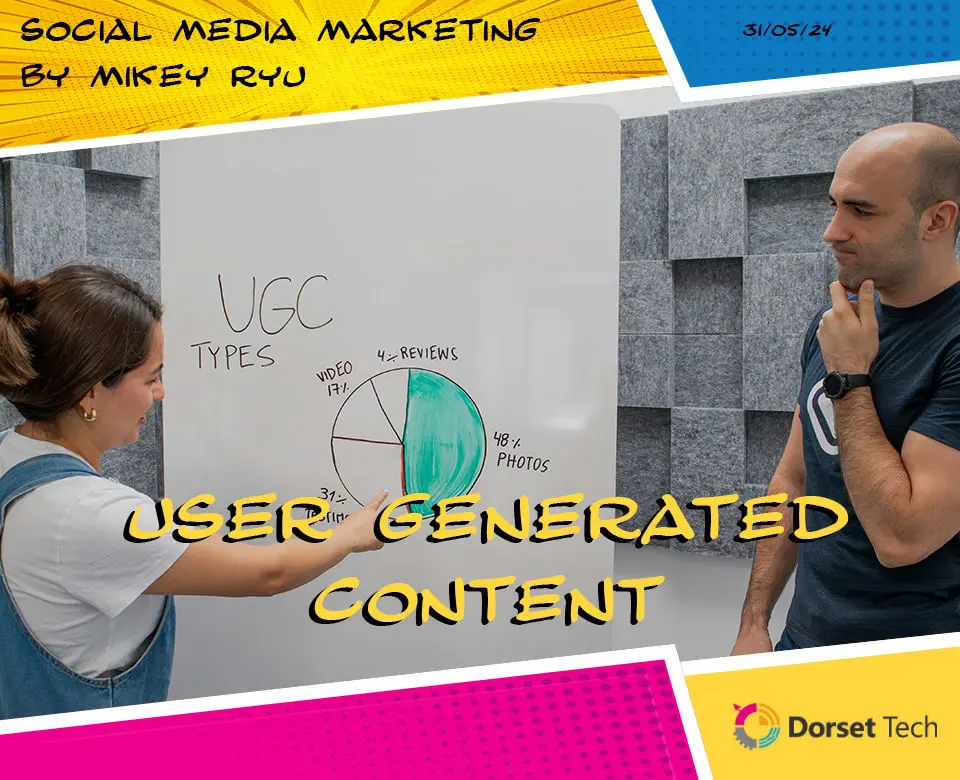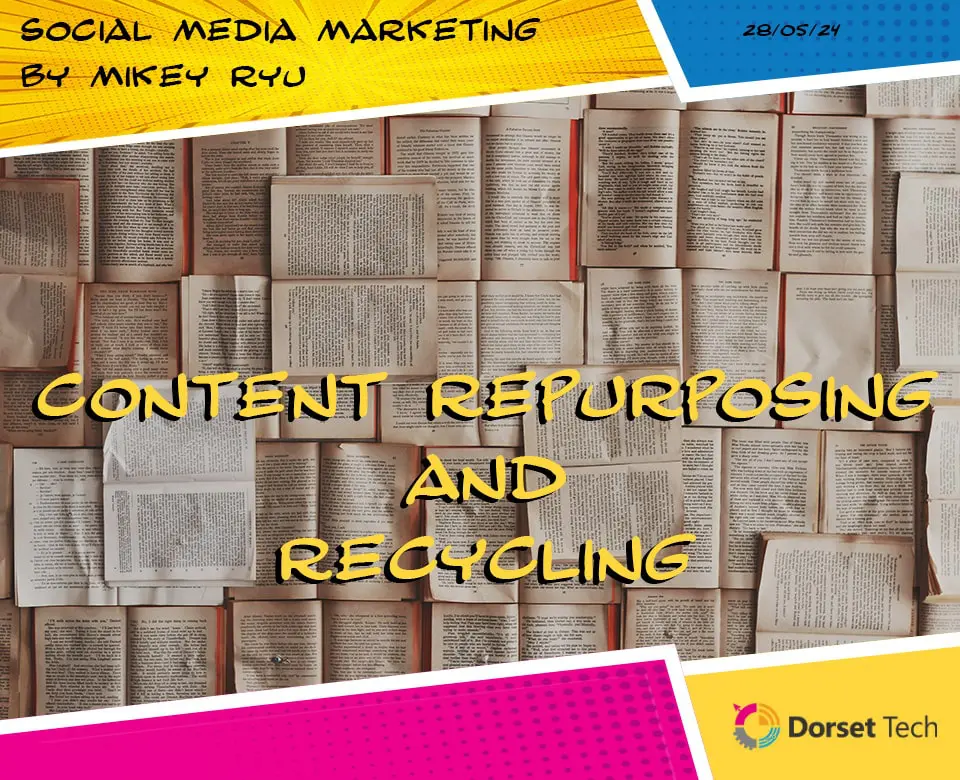
Content Creation for Social Media
Creating engaging and impactful content for social media is essential for building a strong online presence, driving engagement, and achieving business goals. In this comprehensive guide, we’ll explore the different types of content you can create, how to repurpose and recycle content and the importance of using content calendars and scheduling tools to streamline your social media strategy.
Visual Content (Images, Videos, Infographics)
Visual content is the cornerstone of social media marketing. It captures attention quickly and can convey messages more effectively than text alone. Here are some key types of visual content to consider:
Images
Images are a fundamental component of social media content. High-quality photos, graphics, and illustrations can enhance your posts and make them more shareable. When creating image content, consider the following tips:
- Use High-Quality Images: Ensure your images are clear, well-composed, and high-resolution.
- Brand Consistency: Maintain a consistent visual style that aligns with your brand identity.
- Engaging Graphics: Create eye-catching graphics, such as quotes, memes, or promotional visuals, to attract attention.
Videos
Videos are highly engaging and can drive more interaction than other types of content. They can be used for tutorials, product demonstrations, behind-the-scenes glimpses, and more. Here’s how to make the most of video content:
- Short and Sweet: Keep videos concise and to the point, especially on platforms like Instagram and TikTok.
- Storytelling: Use videos to tell compelling stories that resonate with your audience.
- Quality Production: Invest in good lighting, sound, and editing to enhance video quality.
Infographics
Infographics combine visuals and information, making complex data more digestible. They are particularly effective for sharing statistics, processes, or tips. To create effective infographics:
- Clear Data: Present information in a clear, easy-to-understand format.
- Visual Appeal: Use attractive design elements and colour schemes to make infographics engaging.
- Shareability: Design infographics that are easily shareable on social media platforms.
Written Content (Captions, Blog Posts, Articles)
While visuals capture attention, written content is essential for providing context, details, and deeper engagement. Here are key forms of written content for social media:
Captions
Captions play a crucial role in enhancing your visual content. They provide context, prompt engagement, and convey your brand voice. Tips for writing effective captions include:
- Brevity: Keep captions concise and to the point, especially on platforms with character limits.
- Call to Action: Encourage interaction by asking questions, prompting comments, or inviting users to take action.
- Personality: Infuse your brand’s personality into your captions to make them relatable and engaging.
Blog Posts
Sharing blog posts on social media can drive traffic to your website and provide valuable information to your audience. Effective blog content includes:
- Relevant Topics: Write about topics that resonate with your audience and address their needs or interests.
- SEO Optimization: Use relevant keywords to improve search engine visibility and attract more readers.
- Engaging Titles: Craft attention-grabbing titles that entice users to click and read more.
Articles
Longer-form articles can be shared on platforms like LinkedIn or through social media links. They provide in-depth information and establish your brand as an authority in your industry. Key tips for articles include:
- In-Depth Analysis: Provide comprehensive insights and detailed analysis on relevant topics.
- Professional Tone: Maintain a professional and authoritative tone to build credibility.
- Visual Aids: Use images, graphs, and charts to support your content and make it more engaging.
User-Generated Content (UGC)
User-generated content (UGC) is content created by your audience. It can be incredibly powerful for building community and trust. Here’s how to leverage UGC:
Encouraging UGC
Prompt your audience to create and share content related to your brand. This can be done through:
- Contests and Challenges: Run social media contests or challenges that encourage users to create and share content.
- Hashtags: Create a unique hashtag for your brand and encourage users to use it when sharing their content.
- Features: Showcase user-generated content on your social media channels to motivate more participation.
Benefits of UGC
UGC offers several benefits, including:
- Authenticity: User-generated content is perceived as more authentic and trustworthy.
- Engagement: Encouraging UGC fosters a sense of community and increases engagement.
- Cost-Effective: UGC reduces the need for creating all content in-house, saving time and resources.
Content Repurposing and Recycling
Repurposing and recycling content maximizes the value of your content and ensures it reaches a wider audience. Here’s how to effectively repurpose content:
Repurposing Content
Transform existing content into different formats to reach different audience segments. For example:
- Blog to Video: Turn a blog post into a video or webinar to engage users who prefer visual content.
- Infographic to Blog: Expand on an infographic by creating a detailed blog post.
- Quotes: Extract quotes or key points from articles and share them as standalone graphics.
Recycling Content
Recycling involves reusing successful content after some time has passed. Tips for recycling content include:
- Evergreen Content: Focus on evergreen content that remains relevant over time.
- Update and Refresh: Update older content with new information or a fresh perspective before re-sharing.
- Platform Adaptation: Tailor recycled content to fit the specific requirements and audiences of different platforms.
Content Calendars and Scheduling Tools
Effective content creation requires planning and organisation. Content calendars and scheduling tools are essential for managing your social media strategy efficiently.
Content Calendars
A content calendar helps you plan and organize your content in advance. Benefits include:
- Consistency: Ensures a consistent posting schedule, maintaining audience engagement.
- Strategic Planning: Allows for strategic planning of content around key dates, events, and campaigns.
- Collaboration: Facilitates collaboration among team members, ensuring everyone is aligned.
Scheduling Tools
Scheduling tools automate the posting process, saving time and effort. Popular scheduling tools include:
- Hootsuite: Allows for scheduling and managing posts across multiple social media platforms.
- Buffer: Provides a simple interface for scheduling and analyzing social media posts.
- Sprout Social: Offers advanced scheduling features along with robust analytics and reporting.
In conclusion, creating content for social media involves a mix of visual and written content, leveraging user-generated content, and effectively repurposing and recycling existing material. Using content calendars and scheduling tools can streamline your efforts, ensuring a consistent and strategic approach to social media marketing. By understanding and implementing these strategies, you can build a strong and engaging social media presence that drives results for your business.





















